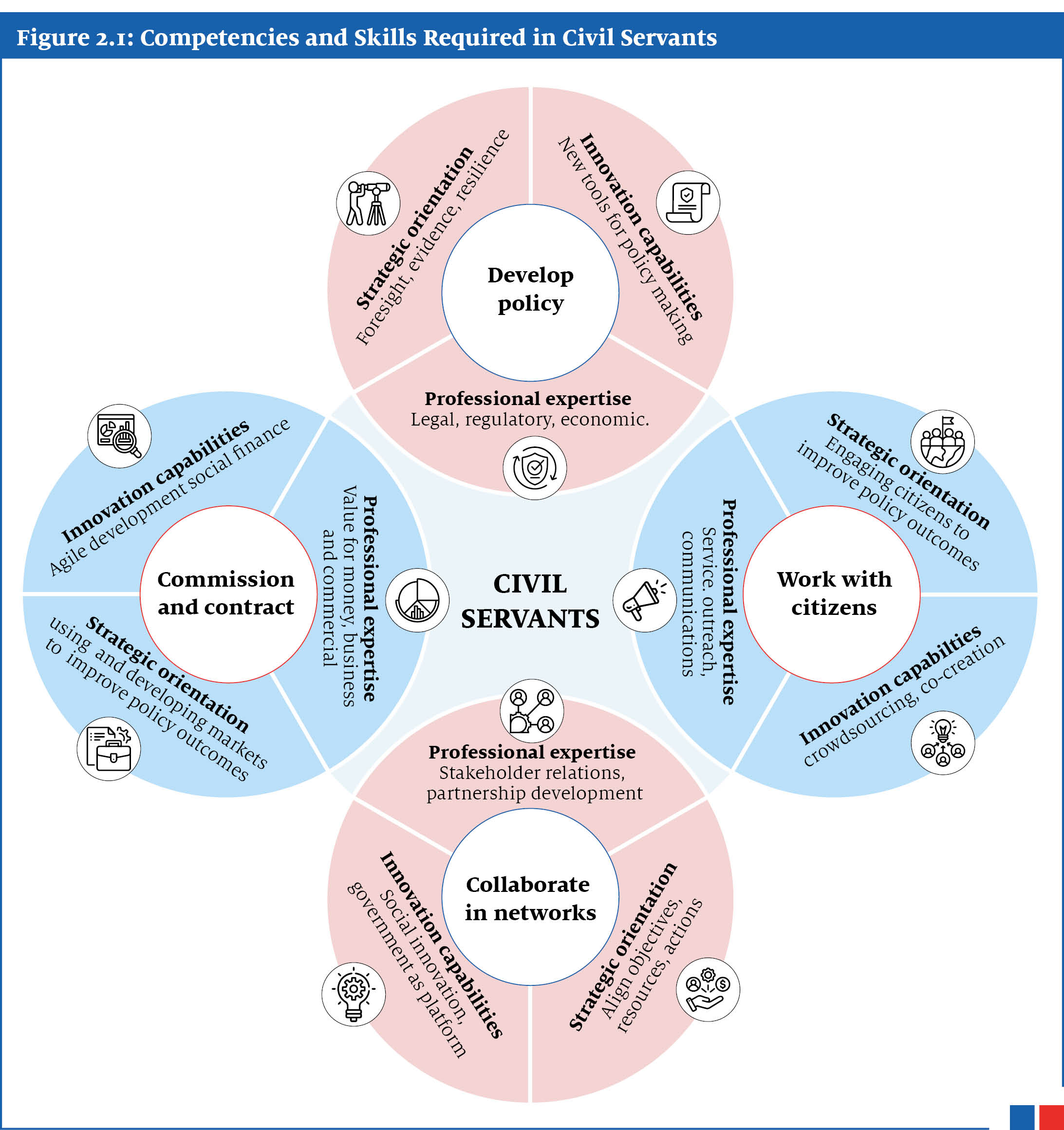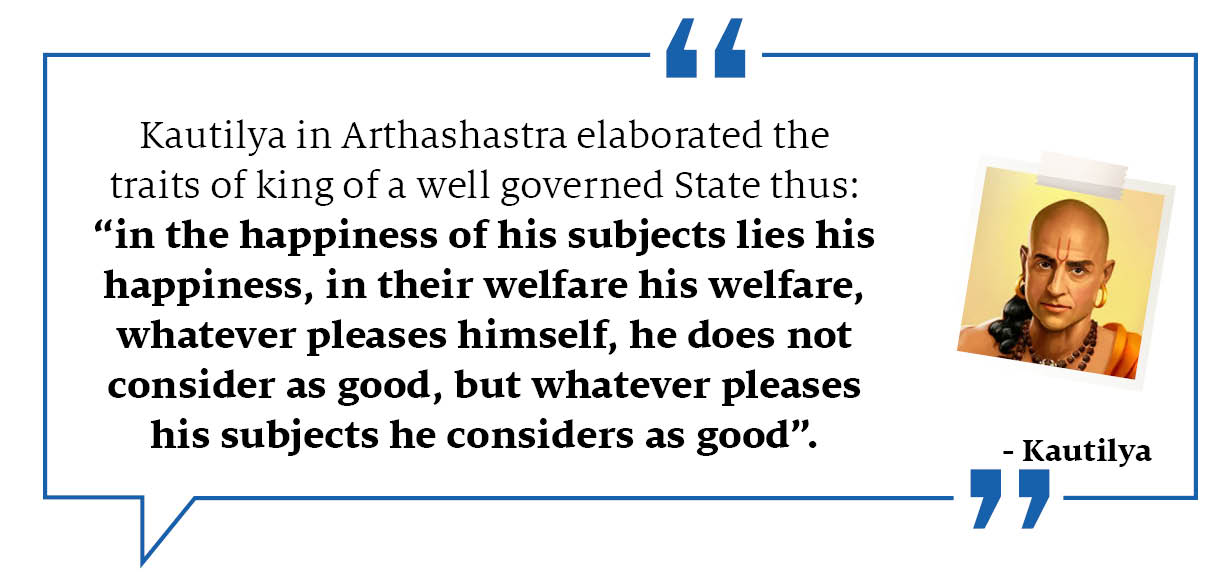Introduction
The administration ensures citizen-centric service delivery, and is vital for India's socio-economic progress. Post-independence, administrative reforms were aimed at transforming the colonial-era machinery into one supporting democracy and development to address new and emerging challenges. As India celebrates its 75th year of independence, the Prime Minister advocates Next Generation Reforms to bridge the government-citizen gap, promoting more effective governance.
1. What do we mean by Administrative Reforms?

Administrative reforms strive to establish and put into practice the necessary adjustments for a government's administrative entities to effectively implement public policies.
The shift from colonial dominance and British laws to democracy marked India's initial reform. Consequently, administrative overhauls became imperative, leading to establishment of commissions/committees like Gorwala Committee, Administrative Reforms Commission, Hota Committee etc.
1.1. What are the different forms of Administrative Reforms?
Administrative reforms can take various forms depending on context, goals, and challenges faced by a government. Some common forms of administrative reforms include:
- Structural Reform: It focuses on division of work, delegation and decentralisation, creation of autonomous agencies, and setting up of coordinating mechanisms to harmonise the actions of interdependent units.
- Procedural Reform: Involves changes in financial rules, alteration of work procedures (e.g. changes in filing methods, forms etc.), and other general attempts to avoid red tape.
- The Staff Inspection Unit, under the Ministry of Finance, set up with the objective of securing the economy in the staffing of Government organizations consistent with administrative efficiency and evolving performance standards, is included under this category.
- Institutional reforms: Involves strengthening institutional capacities, through devolution, decentralisation and democratisation, for effective functioning of grassroot level democracy.
- Establishing new regulatory and oversight agencies, to evaluate performance and enhance efficiency of government agencies also falls under this category.
- Behavioural Reform: Bringing behavioural changes to improve interpersonal and intergroup relationships within the bureaucracy.
- Citizen-centricity Reform: Enhancing the accessibility, quality, and responsiveness of public services to meet the aims and aspirations of citizens, and addressing people’s grievances effectively.
- Legal Reform: It involves the process of developing and enacting legislation through consultations and deliberations in various forums like committees, commissions, press etc.
- For instance, new laws on land reforms or local government can bring significant changes to administration, receiving wide publicity during drafting and debate.
2. What makes Administrative Reforms essential in India?
Administrations today are addressing problems of unprecedented complexity in societies that are more pluralistic and demanding than ever. At the same time, the systems and tools of governance are increasingly digital, open and networked. Thus, administrations need the right skills to keep pace with the changing environment.
- Adaptability: Administrative reforms are needed to adapt to changing circumstances, address new and emerging challenges, such as the ones associated with rapid technological progress, and achieve societal expectations.
- Reforms can also aid the integration of new ideas, policies, institutional arrangements, management tools and technologies in governance.
- Emphasis on procedure than outcomes: Over time, administrative processes have become inefficient due to outdated systems, bureaucratic red tape, or inefficiencies in resource allocation.
- Excessive centralization: Due to the top-down nature of governance in India, reforms aimed at decentralisation are necessary to enhance grass-root democracy and citizen participation in the governance system.
- Poor public perception: The credibility and effectiveness of civil services has eroded in public due to growing perception of nexus between politicians, civil servants and criminals.
- Further, lack of transparency and accessibility has deteriorated the public image of civil servants.
- Sub-optimal Performance management systems: The absence of a well-defined structure for rewards and punishments and the confusion regarding the desirable service norms for civil service have led to low morale and the pursuit of career advancement at the expense of ethical values.
- Limited focus on Citizen-centric Governance: Due to issues like complex processes, ineffective grievance redressal systems, centralized structure, the administrative system in India has become non-responsive.
- Further, citizen participation in administrative decision is also inadequate.
- Need of Capacity Building: Civil Service Reforms, such as skill enhancement and updating processes related to recruitment, appraisal, promotions, etc., based on evolving needs are necessary to strengthen administrative capacity and raise the quality of services to the citizens.

3. What are the major administrative reforms that have been taken in India?
Administrative reforms are a continuous process. Government of India follows the principle of “Minimum Government - Maximum Governance” to enhance efficiency, transparency, corruption-free governance, accountability, and minimizing discretionary powers, and reducing scope for discretion. Some of major steps are as follows:
Table 3.1: Administrative reforms in India | |
| Structural/Institutional reforms |
|
| Reforms for improving administrative Human Resource |
|
| Citizen centric and responsive initiatives |
|
| Tech enabled Governance |
|
| Performance assessment |
|
Acceptance of several Recommendations of Second Administrative Reform Commission (ARC) | |
| Ethics in Governance |
|
| Local Governance |
|
| Promoting e-Governance : The Smart Way Forward |
|
4. What are the roadblocks in implementing Administrative Reforms in India?
The implementation of multiple reforms proposed by various committees and commissions has been impeded by a myriad of issues-
- Concentration of power: India's administrative structure is hierarchical and centralized with decision-making concentrated at top levels. Reforms challenging their practices and power structure face resistance due to reluctance in devolution of power.
- Complex process: Systemic rigidities in policy and management structures within which the civil service functions make the reform process time-consuming and complex.
- The issue is compounded by other challenges such as lack of political will, lack of consensus among the members, etc.
- Dynamic Transitions: The country is undergoing rapid and fundamental changes in terms of economic growth, urbanization, environmental degradation, technological change and increased local awareness and identity. The response time to adapt to these changes is much shorter than it used to be.
- Bureaucratic inertia: Administrative complacency, rising indiscipline, bureaucratic elitism and rampant corruption often lead to the maintenance of the status quo.
- Capacity Building: Insufficient infrastructure, investment in training and development programs, vacant seats in government offices, lack of necessary skills and expertise impede the implementation of new administrative practices effectively.
- For example, as of December 2022, CBI is facing a shortage of 23% of manpower, as of September, 2021, over 4.5 crore cases were pending across all courts in India.
- Poor coordination: The hierarchical system, poor coordination among government departments, overlapping responsibilities and multiple layers of decision-making result in procedural delays in the implementation of reforms.
- Limited citizen participation: The current administrative framework lacks close interaction with citizens, making the reform process less attuned to their needs.
Box 4.1: Good Governance and Citizen Centric Administration in India
 |
5. How can we overcome the obstacles in implementing administrative reforms?
Addressing challenges in effectively managing public affairs through administrative reform requires a comprehensive approach that considers diverse contributing factors.
- Executive Synergy: The relationship between political executive and civil services needs to be transformed on the basis of mutual understanding, respect and recognition of each other's distinct roles and responsibilities.
- Coordination with civil society: Civil servants should view civil society organisations (CSOs) and private sector as partners in the developmental process of the country's governance.
- Citizen-centricity: There is a need to shift from the pre-eminence of governance to effective governance with a focus on decentralization and citizen-centricity.
- This requires the active engagement of stakeholders to understand their needs and concerns and their integration into the reform process to provide efficient and accessible services to all.
- Revamping education: There is a need to introduce a formal degree course in public policy and management in higher education curriculum.
- The syllabi in public policy and management must include an understanding and insight into our Constitution and laws, political system, social and economic concerns, public services, human resource management and core principles of good governance.
- Specialized services: As per 2nd ARC, every officer should gain domain expertise in one area of administration after the initial years of field postings, say 12 years. Later, they should serve for the remainder of their service only in those chosen sectors.
- A transparent, institutionalized procedure for lateral entry at both the central and state levels was also recommended by the second ARC.
- Performance Review: A provision should be made in Civil services law outlining a mechanism to compulsorily retire officers after 15 years, 20 years, 25 years, and 30 years of service after a thorough review of their performance and potential.
- Dedicated authority for personnel management: 2nd ARC suggested the establishment of a ‘Central Civil Services Authority’ entrusted with the task of identifying the posts at the higher management level, fixing tenure for all civil service positions among other things.
- A statutory body Civil Services Board (CSB) can also be created to look into issues such as transfers and promotion of Civil servants. This will help in reducing political pressures on the careers of civil servants.
- Adoption of Technology: Leveraging technology such as blockchain, artificial intelligence, 5G etc. can increase transparency, reduce corruption, and improve efficiency.
- Learning from past experiences and global practices: It is crucial to identify successes, shortcomings, and lessons learned from previous reform initiatives, as well as global best practices to inform future reform efforts effectively.
- Recommendations from other Committees on Civil Service Reform:
- PC Hota Committee:
- Each Department/Ministry must identify points of citizen interface and strengthen the existing grievance redressal mechanism.
- Officers of higher Civil Service must supervise work of junior functionaries by regular visits and inspections.
- New simplified to replace antiquated rules and procedures in Government.
- Baswan Committee:
- To fulfil the requirement of IAS officers for next 10 years, the intake through civil service examination will need to be limited to a certain number to maintain quality and to balance the demand of different cadres.
- Process of settlement of disputes by various state governments in relation to promoted officers should be done in a speedy manner, in order to minimise the gap.
- PC Hota Committee:
Box 5.2: Transformative Technologies: Revolutionizing Administrative ReformsToday the utilization of technology is rapidly increasing across various spheres of administration. For instance-
|
Box 5.3.: Global Best Practices in Public Administration and Public Service Delivery
|
Conclusion
Administrative reforms in India have come a long way, and several significant achievements have been made in enhancing governance and service delivery. However, there is still much to be done particularly in addressing the persistent challenges faced in the administrative system. Adopting best practices and applying the lessons learned from past reform efforts can guide future initiatives towards more productive outcomes. With emerging technologies and a growing emphasis on transparency and citizen participation, there is ample opportunity to build upon past successes and enhance the effectiveness of the administrative system.
- Tags :
- Administrative Reforms
- Lateral Entry
- e-Governance
- Citizen Centric Administration
- ARC





